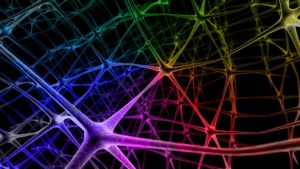Deep Learning: Convolutional Neural Networks in Python

Computer Vision and Data Science and Machine Learning combined! In Theano and TensorFlow.
What Will I Learn?
- Understand convolution
-
Understand how convolution can be applied to audio effects
-
Understand how convolution can be applied to image effects
- Implement Gaussian blur and edge detection in code
- Implement a simple echo effect in code
- Understand how convolution helps image classification
- Understand and explain the architecture of a convolutional neural network (CNN)
- Implement a convolutional neural network in Theano
- Implement a convolutional neural network in TensorFlow
- Install Python, Numpy, Scipy, Matplotlib, Scikit Learn, Theano, and TensorFlow
- Learn about backpropagation from Deep Learning in Python part 1
- Learn about Theano and TensorFlow implementations of Neural Networks from Deep Learning part 2
Description
This is the 3rd part in my Data Science and Machine Learning series on Deep Learning in Python. At this point, you already know a lot about neural networks and deep learning, including not just the basics like backpropagation, but how to improve it using modern techniques like momentum and adaptive learning rates. You’ve already written deep neural networks in Theano and TensorFlow, and you know how to run code using the GPU.
This course is all about how to use deep learning for computer vision using convolutional neural networks. These are the state of the art when it comes to image classification and they beat vanilla deep networks at tasks like MNIST.
In this course we are going to up the ante and look at the StreetView House Number (SVHN) dataset – which uses larger color images at various angles – so things are going to get tougher both computationally and in terms of the difficulty of the classification task. But we will show that convolutional neural networks, or CNNs, are capable of handling the challenge!
Because convolution is such a central part of this type of neural network, we are going to go in-depth on this topic. It has more applications than you might imagine, such as modeling artificial organs like the pancreas and the heart. I’m going to show you how to build convolutional filters that can be applied to audio, like the echo effect, and I’m going to show you how to build filters for image effects, like the Gaussian blur and edge detection.
We will also do some biology and talk about how convolutional neural networks have been inspired by the animal visual cortex.
After describing the architecture of a convolutional neural network, we will jump straight into code, and I will show you how to extend the deep neural networks we built last time (in part 2) with just a few new functions to turn them into CNNs. We will then test their performance and show how convolutional neural networks written in both Theano and TensorFlow can outperform the accuracy of a plain neural network on the StreetView House Number dataset.
All the materials for this course are FREE. You can download and install Python, Numpy, Scipy, Theano, and TensorFlow with simple commands shown in previous courses.
This course focuses on “how to build and understand“, not just “how to use”. Anyone can learn to use an API in 15 minutes after reading some documentation. It’s not about “remembering facts”, it’s about “seeing for yourself” via experimentation. It will teach you how to visualize what’s happening in the model internally. If you want more than just a superficial look at machine learning models, this course is for you.
NOTES:
All the code for this course can be downloaded from my github: /lazyprogrammer/machine_learning_examples
In the directory: cnn_class
Make sure you always “git pull” so you have the latest version!
HARD PREREQUISITES / KNOWLEDGE YOU ARE ASSUMED TO HAVE:
- calculus
- linear algebra
- probability
- Python coding: if/else, loops, lists, dicts, sets
- Numpy coding: matrix and vector operations, loading a CSV file
- Can write a feedforward neural network in Theano and TensorFlow
TIPS (for getting through the course):
- Watch it at 2x.
- Take handwritten notes. This will drastically increase your ability to retain the information.
- Write down the equations. If you don’t, I guarantee it will just look like gibberish.
- Ask lots of questions on the discussion board. The more the better!
- Realize that most exercises will take you days or weeks to complete.
- Write code yourself, don’t just sit there and look at my code.
WHAT ORDER SHOULD I TAKE YOUR COURSES IN?:
- Check out the lecture “What order should I take your courses in?” (available in the Appendix of any of my courses, including the free Numpy course)
- Students and professional computer scientists
- Software engineers
- Data scientists who work on computer vision tasks
- Those who want to apply deep learning to images
- Those who want to expand their knowledge of deep learning past vanilla deep networks
- People who don’t know what backpropagation is or how it works should not take this course, but instead, take parts 1 and 2.
- People who are not comfortable with Theano and TensorFlow basics should take part 2 before taking this course.
Created by Lazy Programmer Inc.
Last updated 8/2018
English
English [Auto-generated]
Size: 1.02 GB
https://www.udemy.com/deep-learning-convolutional-neural-networks-theano-tensorflow/.

Please seed it